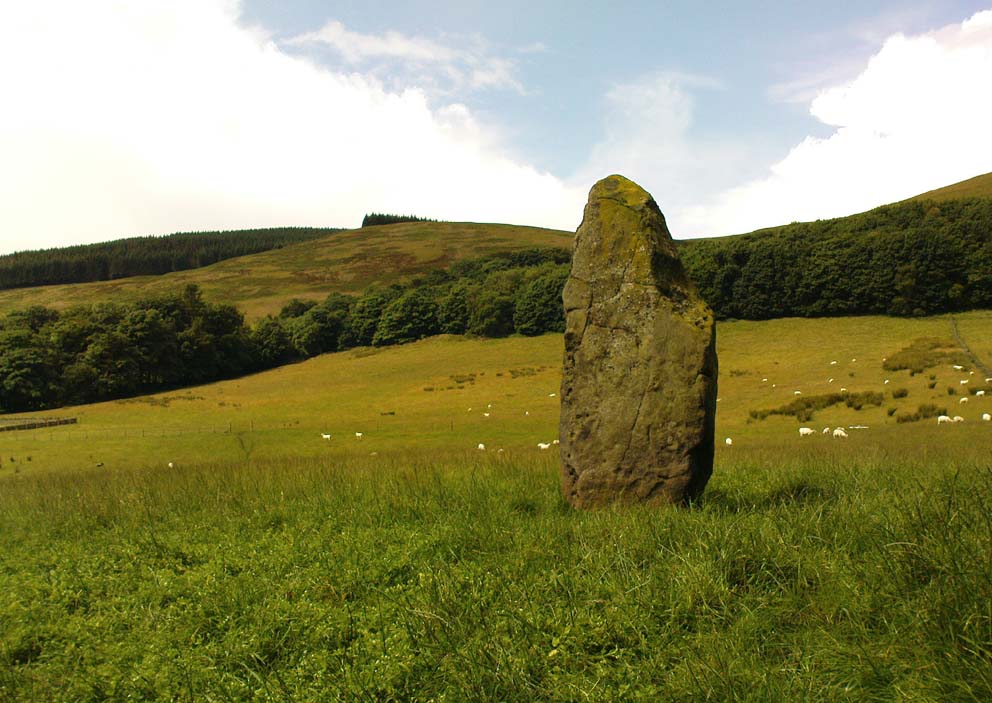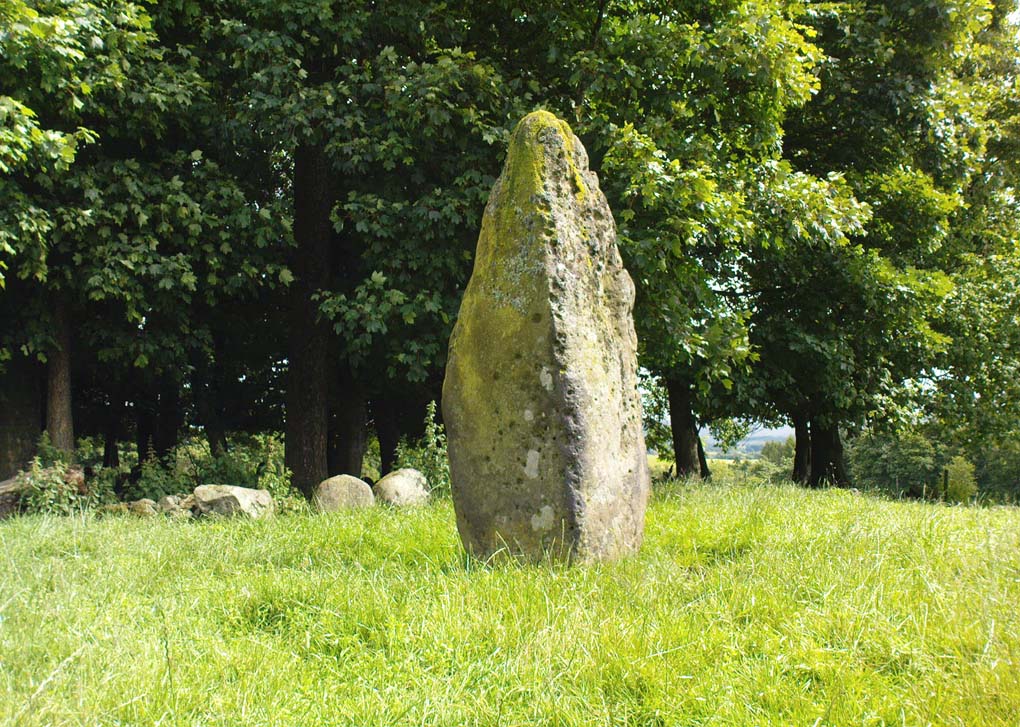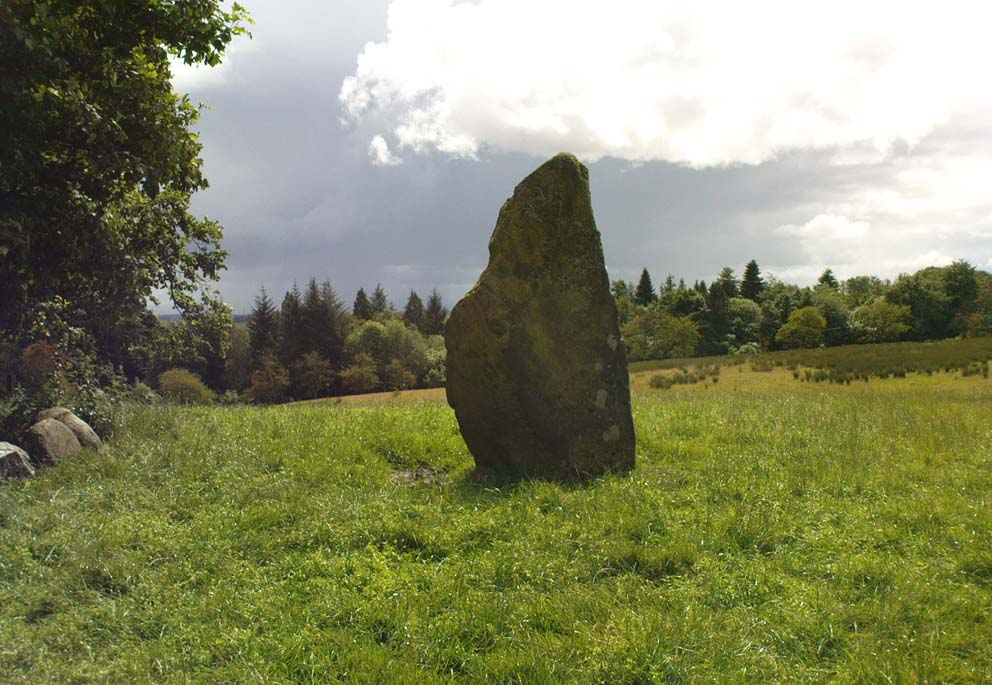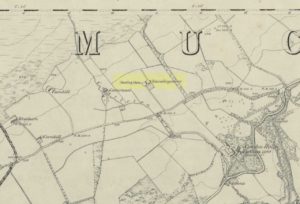Standing Stone: OS Grid Reference – NN 98284 00060
Also Known as:
- Canmore ID 25931
- Home Farm
- Standingstone

Easier to locate if you approach from the Pool of Muckhart side: just off the A91, along a small lane that tells you it’s “Walking & Cycle Friendly”! A half-mile along, up the hill, watch out in the fields to your right, where a clump of trees are enclosed 100 yards off the roadside, before you reach the track to Castleton Farm. There’s a gate allowing access up the field, but you;re just as well asking at the farm, where the folks there are most helpful.
Archaeology & History
This, to me, is a gorgeous standing stone in a truly beautiful setting, living amidst a richly coloured landscape breathing life all around you. I get one helluva good feeling when I visit this place—but it’s the cradle of the landscape itself with Law Hill, Gloom Hill and the Ochils stretching around here that adds the genius loci. But that aside…


Originally standing to the west of Castleton farmhouse a couple of hundred yards away, this large three-sided stone was moved and resurrected sometime in the 1920s to its present position. It stands some eight feet tall, with a couple of its upright faces covered in what looks like curious cup-markings, but these are not man-made and are due entirely to Nature’s handiwork (despite what some archaeologists have said). Immediately east is a small copse of trees within the remains of an unrecorded walled enclosure; although it is certainly of a later date than our standing stone.

The monolith was first described in the 1859 Name Book as, “a large standing stone about 8 feet high in the angle of the garden wall close to the W side of the farm steading, which gave name to the farm.” It was shown on the first OS-map of the area by the farm-side when the building was known as Standingstone.
Folklore
In the 1859 Name Book it was told that the stone was “considered a…memorial of some event”, but we know not what.
References:
- Royal Commission on the Ancient & Historical Monuments, Scotland, The Archaeological Sites and Monuments of Clackmannan District and Falkirk District, Society of Antiquaries of Scotland 1979.
© Paul Bennett, The Northern Antiquarian
The map could not be loaded. Please contact the site owner.